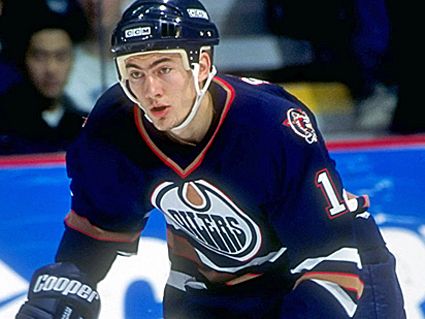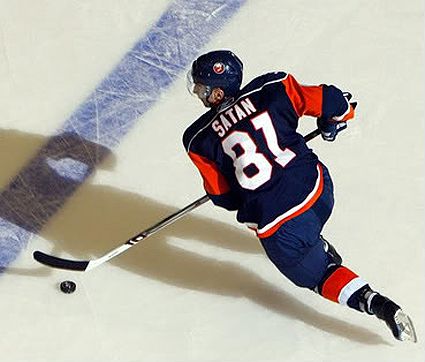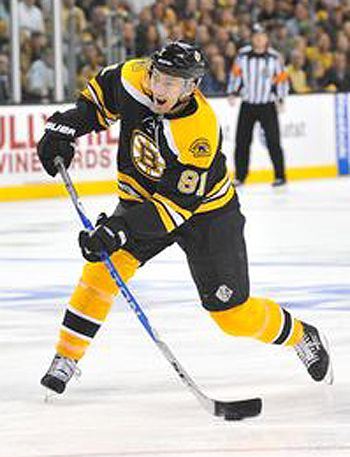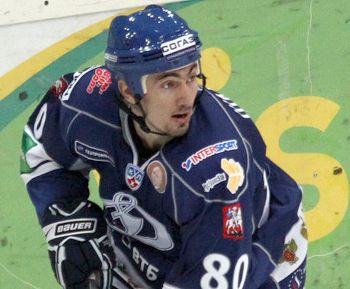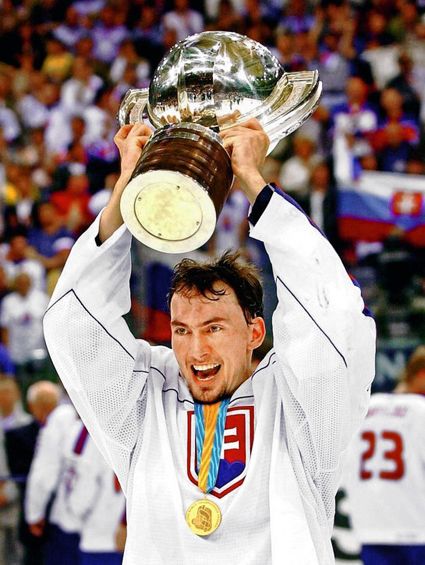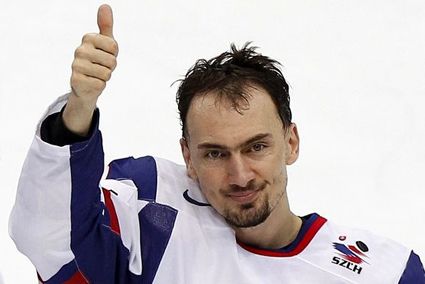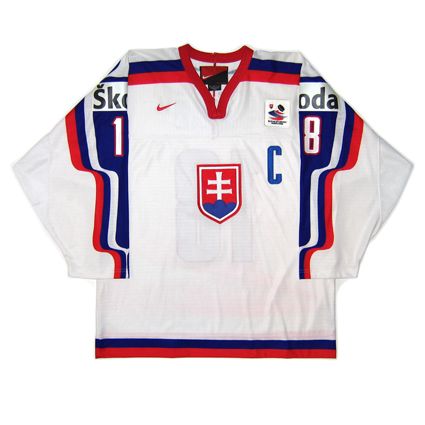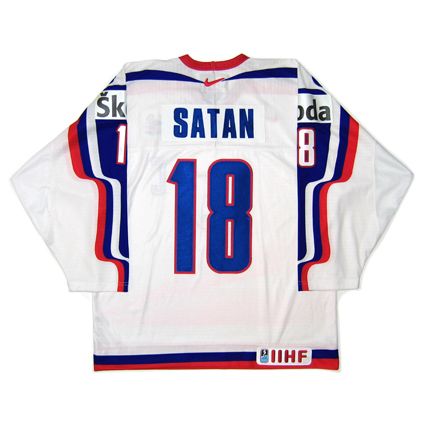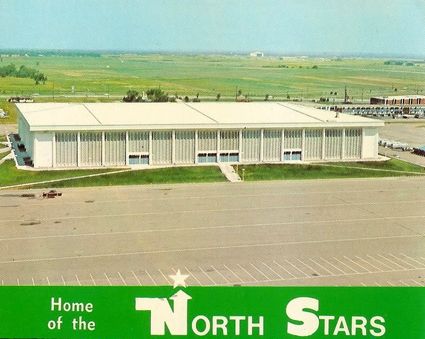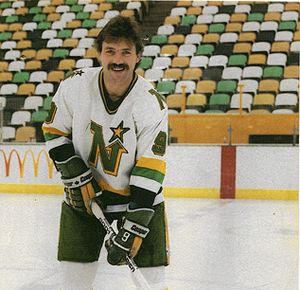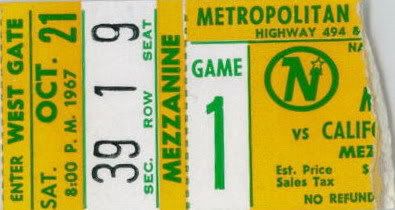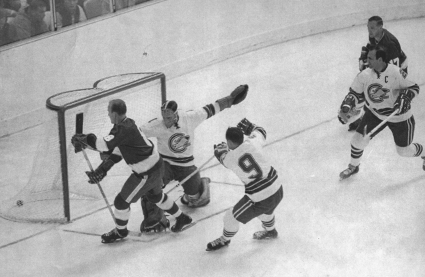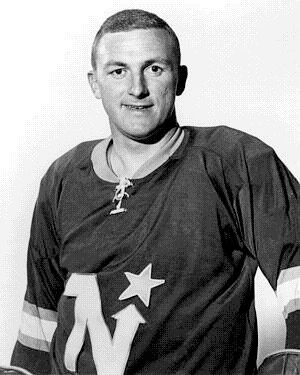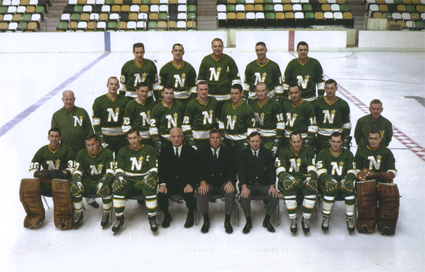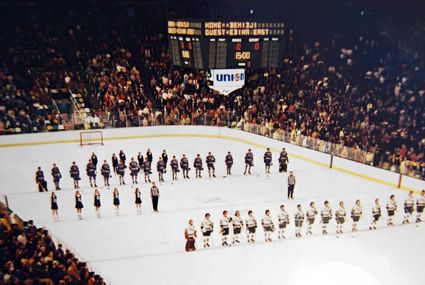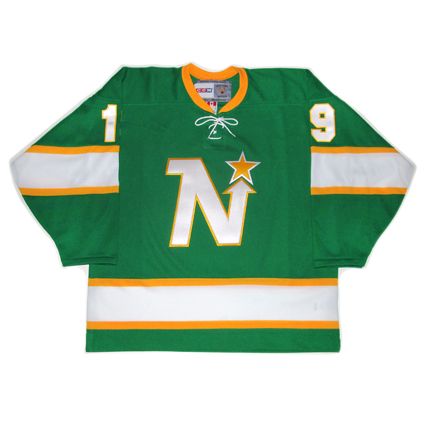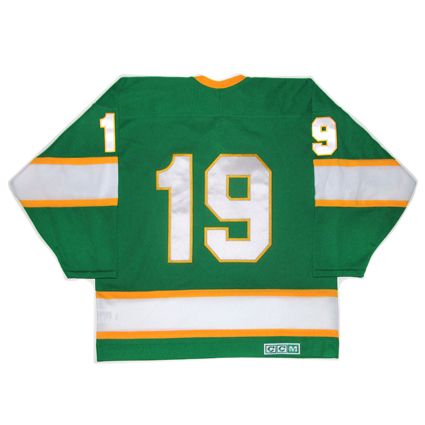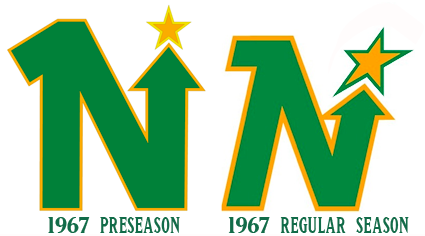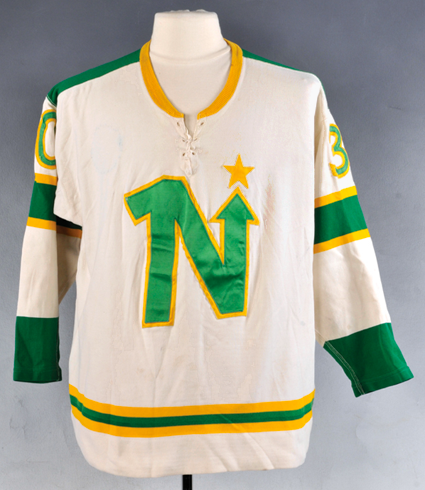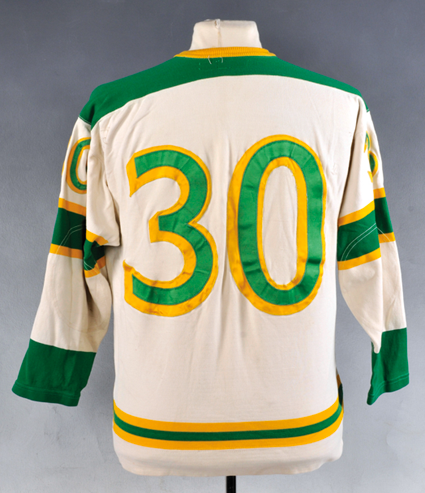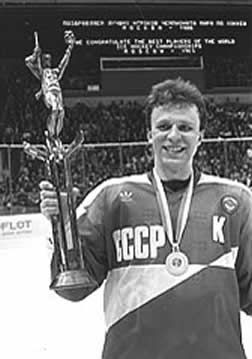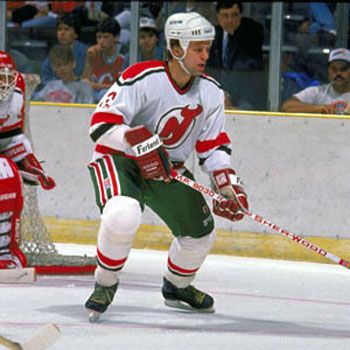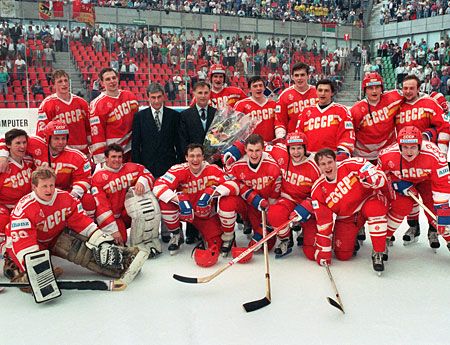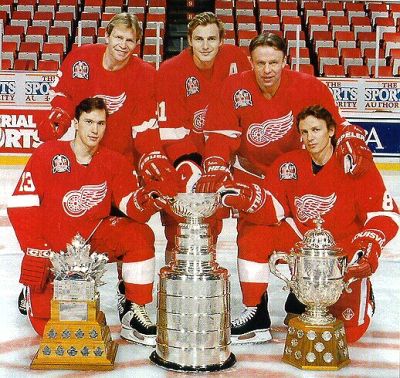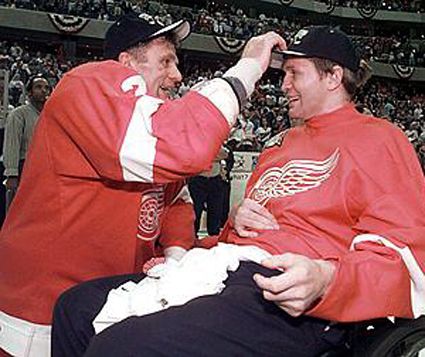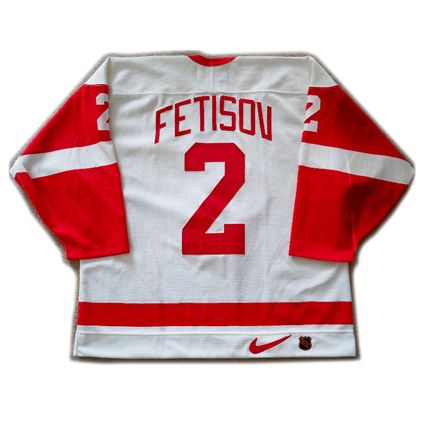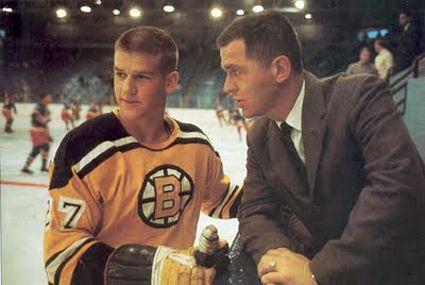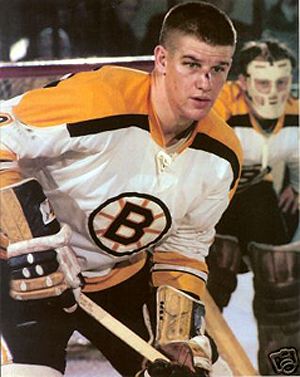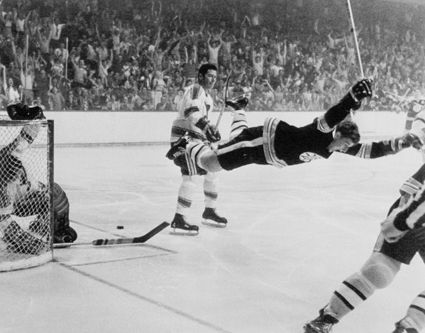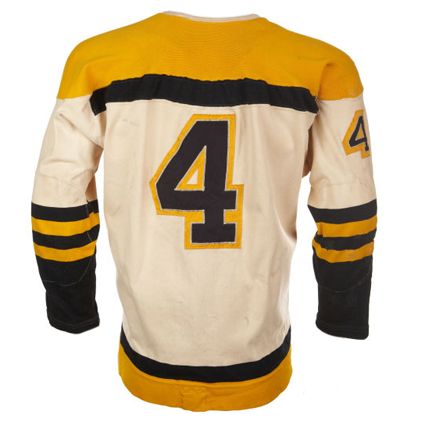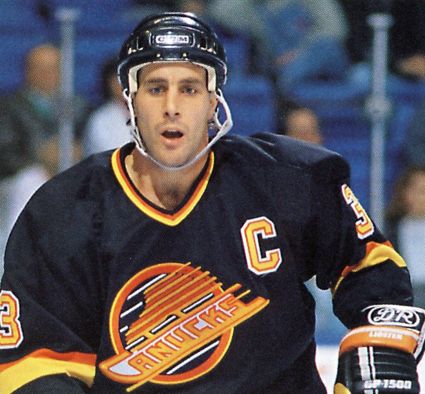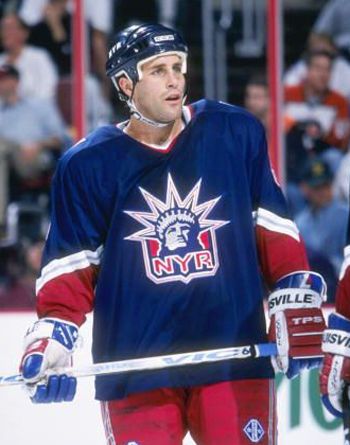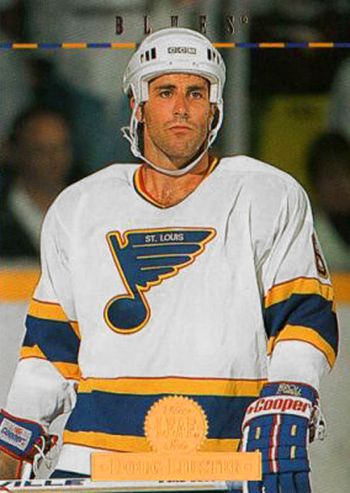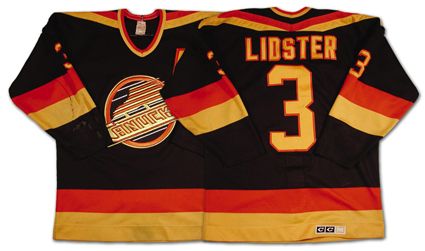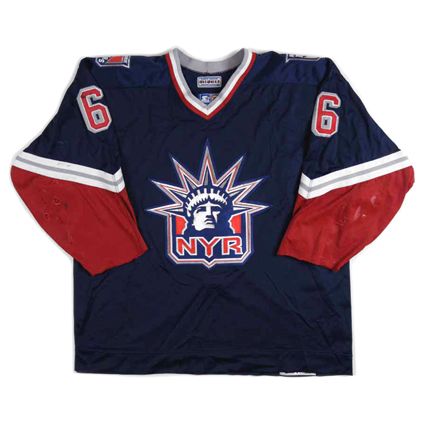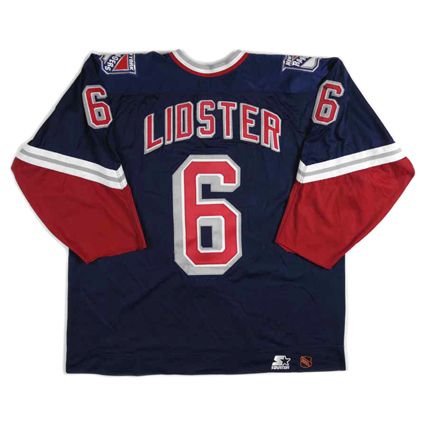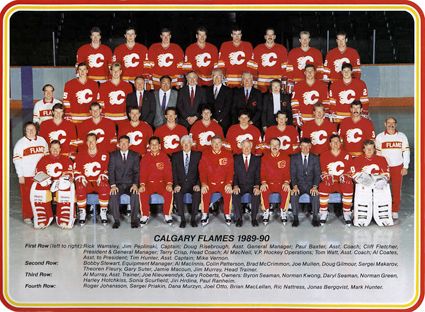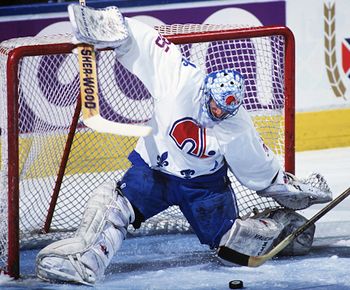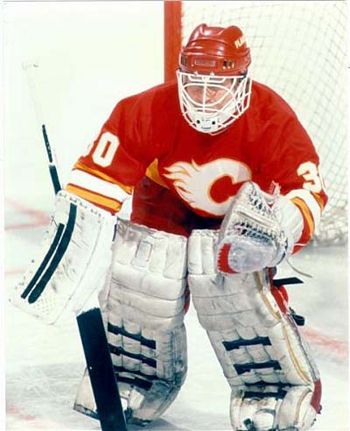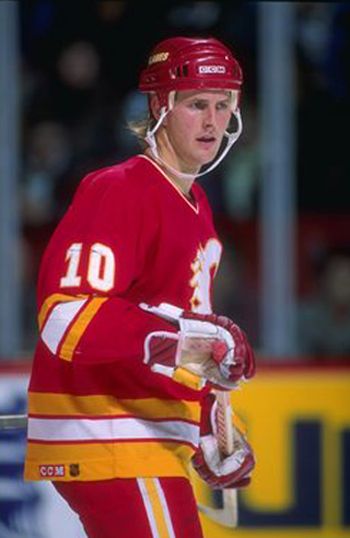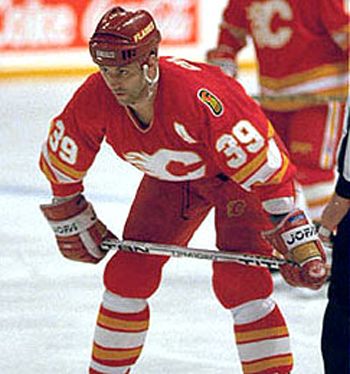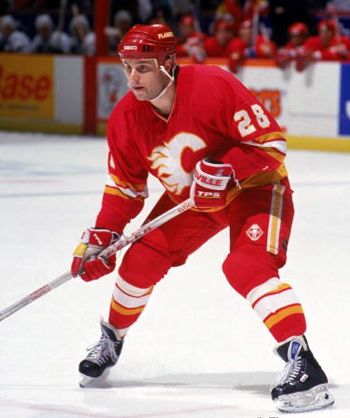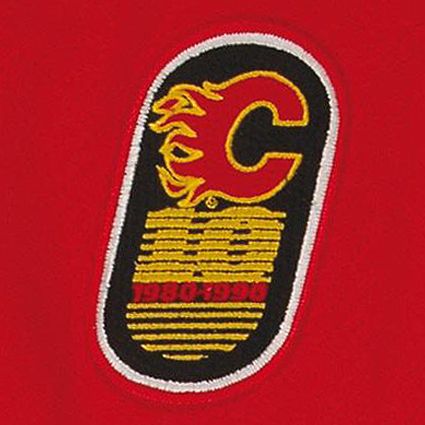He played one well-travelled season in the minors in North America in 1994-95 with the Cape Breton Oilers of the AHL (25 games), the Detroit Vipers (8 games) and the San Diego Gulls of the IHL (6 games) and even one game with the Detroit Falcons of the low level Colonial Hockey League.
He made his NHL debut with the Oilers in 1995-96 and scored 35 goals over the course of two seasons before being traded to the Buffalo Sabres near the end of the second season in Edmonton.
He would go on to play eight seasons with the Sabres, leading them in scoring six times with a career best 40 goals in 1998-99 and a career high 75 points in 2002-03. The Sabres would also make it to the Stanley Cup Finals in 1999 for the first time in Satan's career.
Following the NHL lockout of 2004-05, when he played 18 games back in Slovakia for Slovan Bratislava, he became a free agent and chose to sign with the New York Islanders where he would finish tied for first, second and then third in team scoring during his three seasons on Long Island, highlighted by his 35 goal 66 point season in 2005-06.
Satan would then sign with the Pittsburgh Penguins for the 2008-09 season, scoring 36 points in 65 games before being placed on waivers on the trading deadline late in the season. After being assigned to the minors with the Wilkes-Barre/Scranton Penguins of the AHL, he was recalled by the Penguins a month later and rejoined the Penguins during the Stanley Cup Playoffs. He would appear in nine games and score a goal and four assists on his way to winning the Stanley Cup for the only time in his career.
His final NHL season saw Satan sign with the Boston Bruins in early January halfway through the 2009-10 season. During that season's playoffs, Satan would score the game winning goal against his old club Buffalo in double overtime and then score the series clinching goal five days later.
After 14 NHL seasons, Satan would move back to Europe to continue his career. A shortened 2010-11 season saw him play 10 games with Slovan Bratislava and 6 more with Dynamo Moscow of the KHL.
Satan would play a full season with Slovan Bratislava in 2011-12, a successful campaign that saw him average more than a point per game with 52 points in 49 games, capped off by leading all scorers with 22 points in 12 playoff games as Slovan captured the league championship.
He would play two additional seasons with Bratislava, who had now moved to the KHL for the 2012-13 season before retiring at the age of 39 following the 2-13-14 season.
Satan's final NHL totals were 1,050 games played with 363 goals and 735 points with an additional 114 goals coming while playing in Europe.
Internationally, Satan has appeared for Slovakia in the World Championships 14 times, including helping the newly formed nation climb the international ladder system in the quickest time possible, as Slovakia was initially placed in the lower levels of the system while the Czech Republic remained at the top in Pool A after Czechoslovakia divided in two.
In his first World Championships, Slovakia won Pool C in 1994 (where Satan was named Best Forward), followed immediately by Slovakia winning the Pool B in 1995 to reach the Top Division in just two years. Satan was on the Slovak roster in 1996, their first in the Top Division.
He then earned a silver medal as team captain in 2000 (where he was again named Best Forward) and was captain again as Slovakia reached the pinnacle of winning World Championship gold in 2002.
Satan was captain once more in 2003, winning bronze and appeared in the World Championships again in 2004, 2005, 2007, 2010, 2011, 2012 (winning silver), 2013 and one final time in 2014.
Additionally, he has played in the World Juniors in 1994, the World Cup of Hockey in 1996 and 2004, again as team captain, as well as the 1994, 2006 and 2010 Winter Olympics. He was also named to the 2002 team, but with the NHL not suspending play during the qualification rounds, Slovakia was eliminated before he was able to participate.
In all, Satan would win one gold, two silver and a bronze at the World Championships while appearing in 180 games, scoring 86 goals while being a vital member of the of both the fledgling national team program which started life in the bottom rung "C" Pool and eventual world champions in the span of eight short years.
Today's featured jersey is a 2005 Slovakia National Team Miroslav Satan jersey. For the 2005 World Championships in Austria, all the participating team's jerseys were redesigned, only to be quickly replaced by the new Nike Swift jerseys for the 2006 Olympics, leaving today's featured jersey with a all-too-brief lifespan of one year, making it quite rare.
This jersey features the IIHF patch, the Slovakia Ice Hockey Federation patch, Satan's captain's "C" and a pair of our custom made Skoda sponsorship patches, from the loyal sponsor of the IIHF World Championships.
Here is a compilation of goals scored by Satan. Do not miss the first one, shot between his legs and behind his back. A real beauty.
Last up is a highly professional look at Satan's national team career well worth your time.

